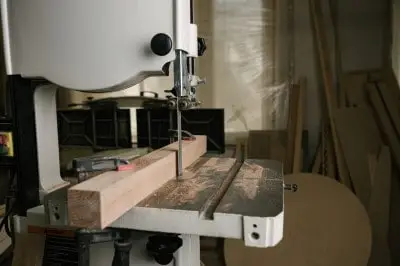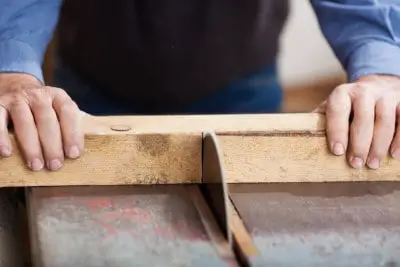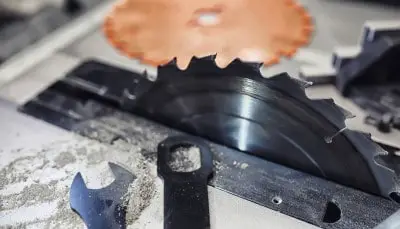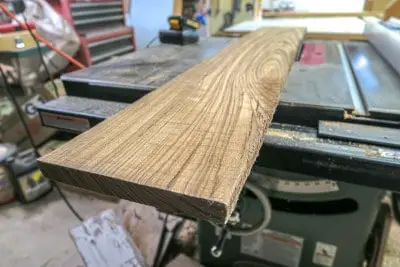Cutting tiles is an essential part of any tile installation project, but not everyone has access to a wet saw, which is a powerful tool commonly used for cutting tiles.
However, fear not, because there are several methods you can use to cut tiles without a wet saw. From using a simple tile nipper to a sophisticated angle grinder, there are several ways to achieve the desired cut without a wet saw.
In this article, we will discuss some of the most effective methods for cutting tiles without a wet saw, along with their pros and cons, and safety precautions to follow when using each method.
So, whether you’re a DIY enthusiast or a professional tile installer, keep reading to learn how to cut tiles without a wet saw.
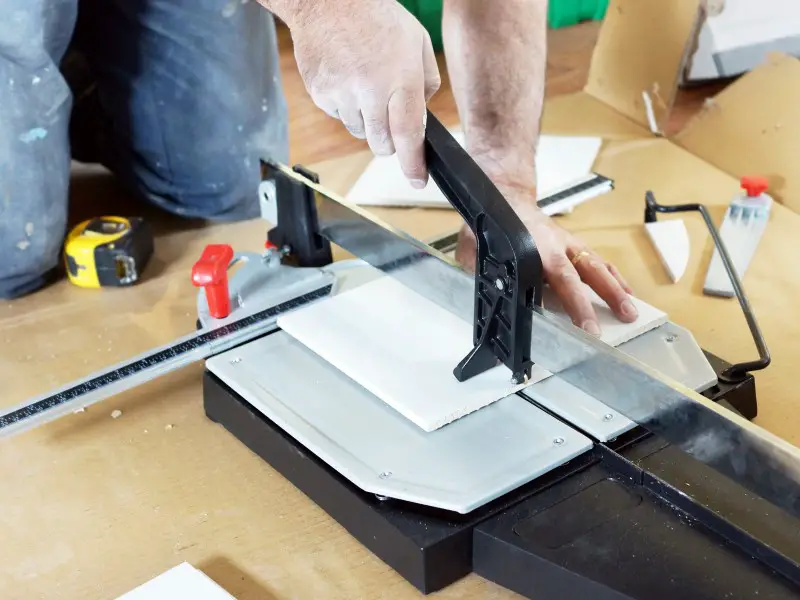
1. Manual Tile Cutter
A manual tile cutter is a hand-held tool that is designed to score and snap tiles. It is a great option for cutting ceramic and porcelain tiles that are up to 1/2 inch thick. Here are the steps to using a manual tile cutter to cut a tile:
- Measure and mark the tile where you want to make the cut.
- Place the tile face-up on the base of the cutter, making sure the line you drew is lined up with the cutting wheel.
- Push down on the handle to score the tile along the line you drew.
- Move the tile towards the breaker bar, which is a metal bar that runs along the base of the cutter.
- Push down on the breaker bar to snap the tile along the scored line.
- Smooth the edges of the tile with a rubbing stone or sandpaper.
Compared to using a wet saw, using a manual tile cutter is a simpler and less messy option. Wet saws are powerful tools that use water to cool the blade and minimize dust, making them ideal for cutting harder materials like natural stone, glass, and porcelain tiles. However, wet saws are expensive, and their blades need to be regularly replaced.
Manual tile cutters are cheaper and easier to maintain than wet saws. They are also quieter and produce less dust than wet saws, making them more suitable for indoor projects. However, manual tile cutters are not as versatile as wet saws and cannot cut complex shapes or small pieces of tile. Also, manual tile cutters are less effective when cutting harder or thicker materials.
2. Glass Cutter
Using a glass cutter to cut tiles is a great option for creating intricate designs and complex shapes on tiles. However, this method is best for cutting soft tiles such as ceramic and not ideal for harder tiles like porcelain or natural stone. Here are the steps to using a glass cutter to cut tiles:
- Measure and mark the tile where you want to make the cut.
- Place the tile face-up on a flat surface.
- Hold the glass cutter perpendicular to the tile’s surface and use a firm and consistent pressure to score the tile along the line you drew.
- Once the line has been scored, use tile nippers to break the tile along the scored line.
- Smooth the edges of the tile with a rubbing stone or sandpaper.
When compared to using a wet saw, using a glass cutter is a more affordable and accessible option, as glass cutters are inexpensive and readily available in most hardware stores. This method is also quieter and creates less mess than using a wet saw. Additionally, a glass cutter allows for more creative freedom to make intricate and detailed cuts.
However, using a glass cutter requires a steady hand, and the scoring line must be continuous for the tile to break along the desired line. This can be challenging, especially for beginners. Also, using a glass cutter is not suitable for harder materials like porcelain and natural stone, and cutting thicker tiles can be difficult and may result in cracking or breaking.
3. Tile Nipper
Using a tile nipper is a hand-held tool that is designed to break small pieces of tile. It is best for cutting curved or angled shapes and making small adjustments to tile pieces. Here are the steps to using a tile nipper to cut a tile:
- Measure and mark the tile where you want to make the cut.
- Use the tile nipper to slowly and gently bite into the tile along the marked line. Start by taking small bites, and then gradually increase the pressure as you get closer to the end of the cut.
- Once the tile has been nibbled away, use a rubbing stone or sandpaper to smooth the edges of the tile.
When compared to using a wet saw, using a tile nipper is a more affordable and accessible option. Tile nippers are also lightweight, easy to use, and do not require electricity or water. Additionally, they can be used to make intricate cuts, particularly around curves and corners, where using a wet saw would be difficult.
However, using a tile nipper can be slow and tedious, particularly for large projects, and can produce more waste. Tile nippers are also not suitable for cutting straight lines or for thicker tiles. Additionally, using a tile nipper requires a bit of skill and can be challenging for beginners.
4. Angle Grinder
Using an angle grinder is a great option for cutting tiles, especially when you need to make complex cuts, such as curves or angles. However, this method can be more challenging and requires more skill and experience to use effectively. Here are the steps to using an angle grinder to cut a tile:
- Measure and mark the tile where you want to make the cut.
- Use an adjustable square to make sure the angle grinder is set at the correct angle.
- Put on safety glasses and a mask to protect your eyes and lungs from dust.
- Position the angle grinder on the edge of the tile, where you want to make the cut.
- Turn on the angle grinder and slowly guide it along the line you marked on the tile. Take your time and maintain a consistent pressure to ensure a clean and even cut.
- Once the cut is complete, use a rubbing stone or sandpaper to smooth the edges of the tile.
When compared to using a wet saw, using an angle grinder is a more affordable and accessible option. Angle grinders are also portable and versatile, making them ideal for projects that require cutting in tight spaces. Additionally, an angle grinder can be used for a wide range of materials, not just tiles.
However, using an angle grinder can be more challenging than using a wet saw, especially for beginners. The risk of cracking the tile is high if you apply too much pressure or do not maintain a steady hand. Additionally, angle grinders create more dust than wet saws, making them more suitable for outdoor projects.
5. Carbide-Tipped Pencil
Using a carbide-tipped pencil is a simple and straightforward way to make small cuts in tiles. It is a great option for cutting small or intricate pieces of tile or for making precise cuts around outlets and fixtures. Here are the steps to using a carbide-tipped pencil to cut a tile:
- Measure and mark the tile where you want to make the cut.
- Place the tile on a flat surface and hold it securely.
- Use the carbide-tipped pencil to gently score the tile along the line you marked. Be sure to apply a consistent and steady pressure to ensure the score line is continuous.
- Use tile nippers to break the tile along the scored line.
- Use a rubbing stone or sandpaper to smooth the edges of the tile.
When compared to using a wet saw, using a carbide-tipped pencil is a more affordable and accessible option. Carbide-tipped pencils are also lightweight, easy to use, and do not require electricity or water. Additionally, they can be used to make intricate cuts, particularly around corners and curves.
However, using a carbide-tipped pencil can be slow and tedious, particularly for large projects, and can produce more waste. Carbide-tipped pencils are also not suitable for cutting straight lines or for thicker tiles. Additionally, using a carbide-tipped pencil requires a bit of skill and can be challenging for beginners.
Conclusion
Cutting tiles without a wet saw is not only possible but can also be an affordable and accessible option. From using a simple tile nipper to a more sophisticated angle grinder, there are several ways to achieve the desired cut without a wet saw.
Depending on the project’s size, budget, and the material being cut, one method may be more suitable than another.
Using a manual tile cutter is a great option for straight cuts, while using a glass cutter is ideal for intricate designs and complex shapes.
A tile nipper is perfect for cutting curves or making small adjustments to tile pieces, and an angle grinder is an excellent option for making complex cuts.
Finally, a carbide-tipped pencil is a simple and straightforward way to make small cuts in tiles. Whatever method you choose, be sure to wear protective gear and follow safety precautions to avoid injuries.
With the right tools, patience, and skill, cutting tiles without a wet saw can be a simple and rewarding experience.



